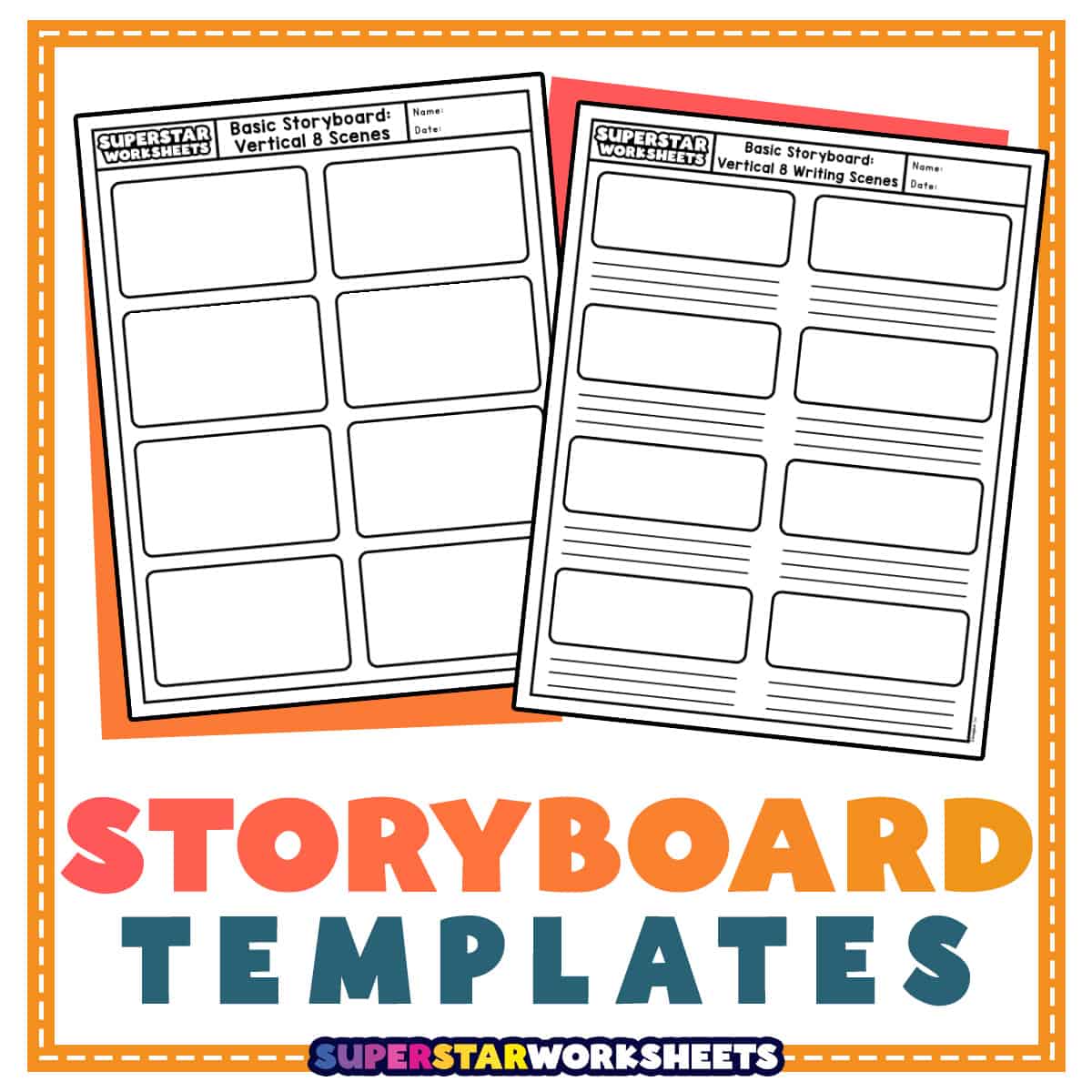
Storyboard Templates make writing fun and easy for students to organize their creative writing story lines. These templates make the perfect addition to writing projects for kids because they will help improve creating writing through the use of these free, printable PDF worksheets. These templates make writing in elementary school easy and enjoyable! Writing becomes super fun with our Writing Bundle – check it out today!
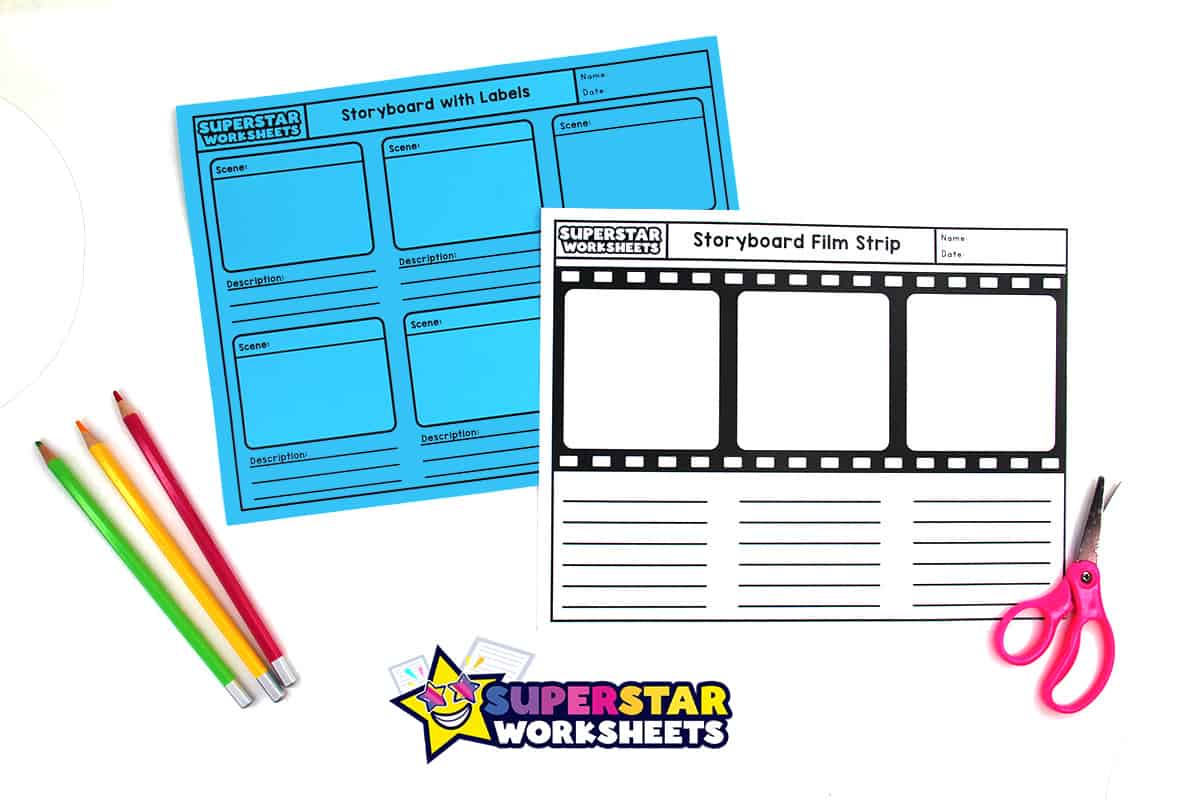
Storyboard Templates
These storyboard templates are an excellent tool for kids to use when creating their own visual stories. Whether it’s for a school project or just for fun, the six, eight, and ten-scene templates provide ample framing for developing a complete narrative. The templates incorporate lines below each scene for easy caption or dialogue writing, which helps kids develop their storytelling skills. The horizontal lines guide their sketches and ensure that their drawings remain tidy and organized. By using these templates, kids can explore their creativity and develop their ability to visualize and share their stories with others.
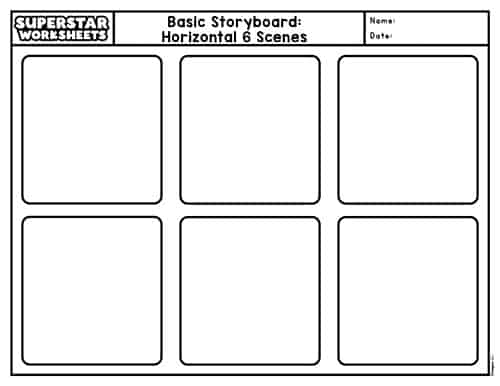
Basic Storyboard: Horizontal 6 Scenes
The six-scene storyboard worksheet consists of a single worksheet page designed for concise storyboard creation. It provides space for six scenes, with each scene represented by a frame.
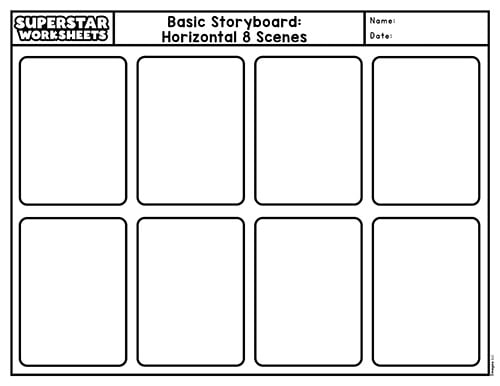
Basic Storyboard: Horizontal 8 Scenes
The eight-scene storyboard worksheet features a worksheet page that can accommodate up to eight scenes, providing more space compared to the six-scene template. Each scene is designated by a frame.
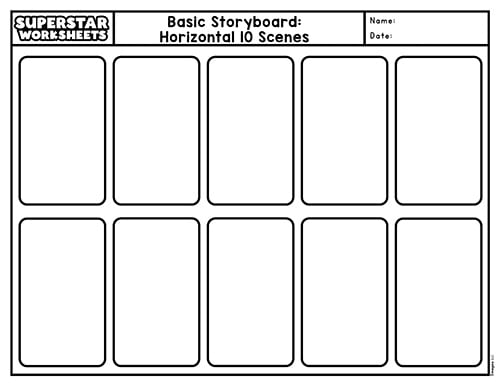
Basic Storyboard: Horizontal 10 Scenes
The ten-scene storyboard worksheet offers a worksheet page with space for up to ten scenes, providing even more room for sketching and writing compared to the previous templates.
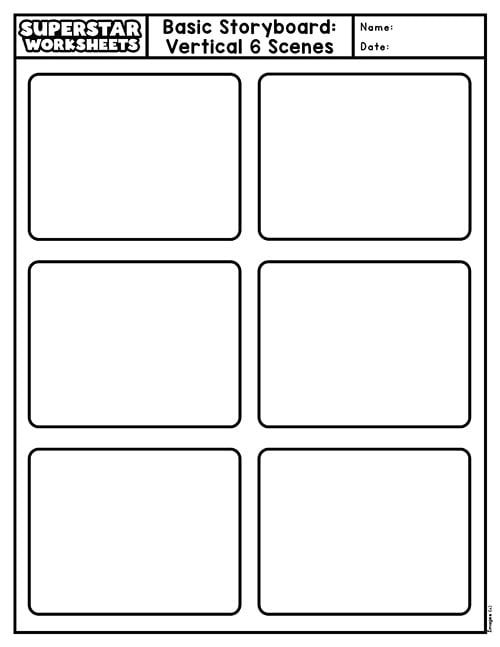
Basic Storyboard: Vertical 6 Scenes
This vertical 6-scene template is ideal for shorter stories or concepts that can be effectively conveyed in a limited number of scenes. It offers enough room to sketch the key elements for each scene, allowing for a focused and streamlined storyboard creation process.
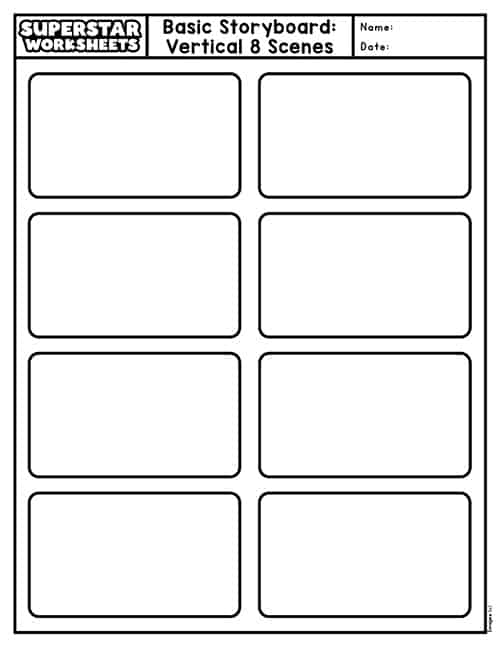
Basic Storyboard: Vertical 8 Scenes
The additional frames in this 8-frame template allow for more intricate visual representations. It is suitable for slightly longer stories or more complex concepts that require a few more scenes to effectively convey the narrative. The ample space offered by this template allows for a more comprehensive storytelling approach.
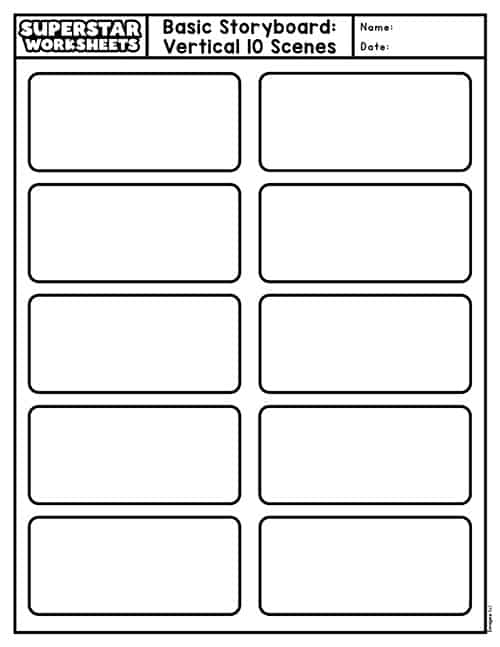
Basic Storyboard: Vertical 10 Scenes
Each scene is represented by a frame, on this 10-frame vertical worksheet. This template is suitable for longer stories and subplots that require additional scenes to fully develop. Its generous space allows for more elaborate visual representations, providing an opportunity to capture the essence of more complex narratives.
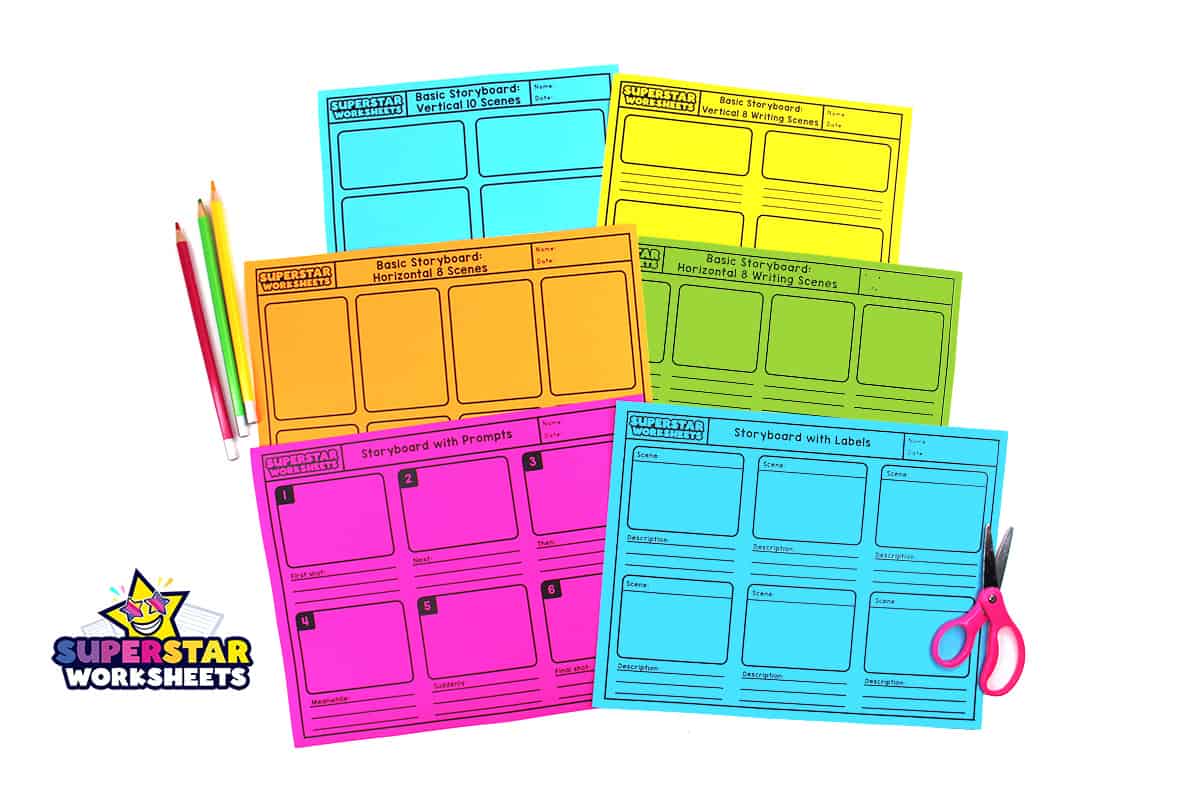
Storyboarding Template
Using storyboard templates with kids in the classroom is a great way to foster creativity and enhance storytelling skills. Start by introducing the concept of storyboarding and explain its purpose in visualizing narratives. Provide each student with a storyboard template that suits their project length, such as the six, eight, or ten-scene templates. Encourage them to brainstorm ideas and sketch their scenes in the designated frames, using the lines below to write captions or dialogue. Grab our Comic Strip Templates for more storyboarding fun!
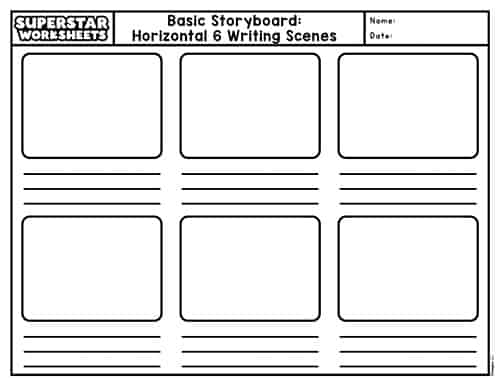
Basic Storyboard: Horizontal 6 Writing Scenes
The six-scene storyboard worksheet provides a single worksheet page that features six framed boxes, each designed to accommodate a different scene. To help you develop your narrative, each scene frame is accompanied by three lines where you can write captions or dialogue.
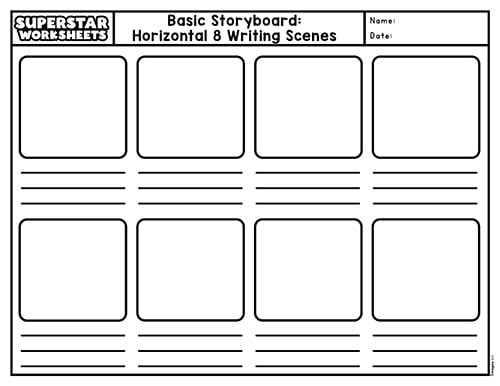
Basic Storyboard: Horizontal 8 Writing Scenes
The eight-scene storyboard worksheet offers a storyboard template that allows you to expand your narrative across eight scenes. This template showcases eight framed boxes, with each box accompanied by three lines where you can jot down captions or dialogue.
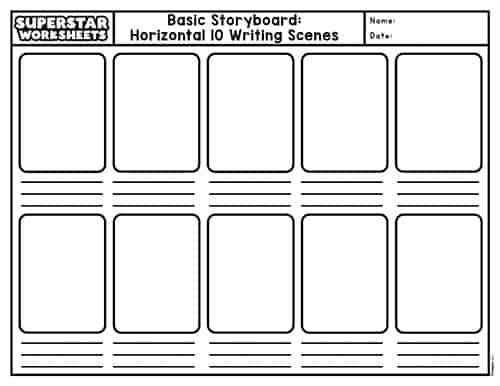
Basic Storyboard: Horizontal 10 Writing Scenes
With the expanded space provided by this 10-frame template, you have the freedom to fully flesh out your visual storylines. This template is perfect for projects such as short films, documentary features, television storyboards, or any visual narrative that demands thorough story development. By utilizing the ten-scene template, you can bring your complex and detailed narratives to life with ease.
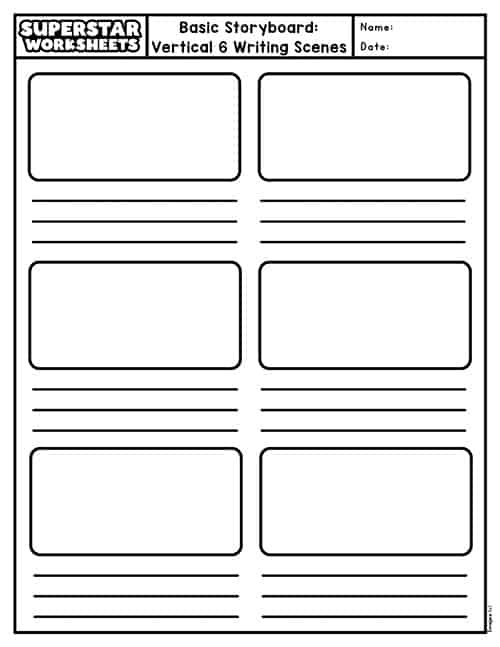
Basic Storyboard: Vertical 6 Writing Scenes
This template incorporates horizontal lines to guide your sketches, ensuring your drawings remain organized on the page. This template is especially well-suited for projects that require a concise storytelling approach. Whether you’re working on a short story, advertisement, or animation, this six-scene template will provide ample space for visualizing your ideas.
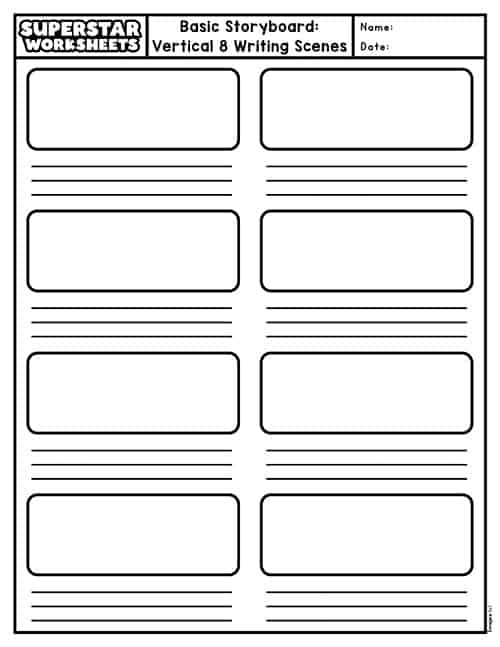
Basic Storyboard Vertical 8 Writing Scenes
Just like the six-scene template, this one also incorporates horizontal lines to facilitate the organization of your sketches. With the additional scenes, you can delve deeper into your storytelling, exploring multiple storylines or intricate narratives. Whether you’re working on a graphic novel, animation, advertising campaign, or any creative project that benefits from a more detailed narrative structure, this eight-scene template will provide you with the space and structure you need.
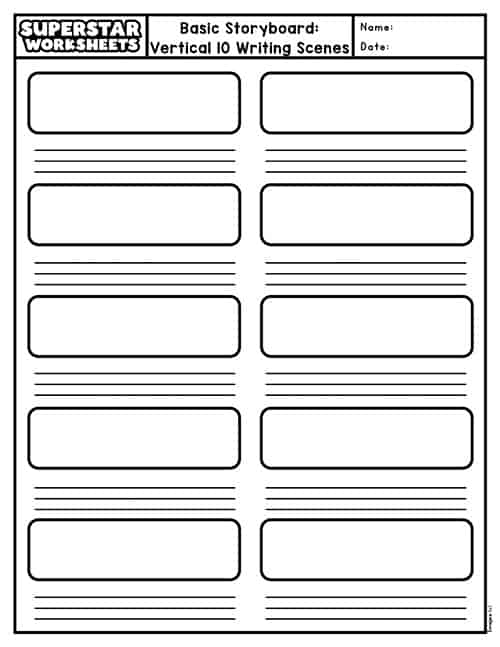
Basic Storyboard Vertical 10 Writing Scenes
The ten-scene storyboard worksheet offers a storyboard template that allows for even more intricate and comprehensive storytelling. Spread across two worksheet pages, this template provides ten framed boxes, each dedicated to a unique scene. Just like the previous templates, each scene frame is accompanied by three lines for capturing captions or dialogue. To keep your sketches neat, the template includes horizontal lines as a guide.
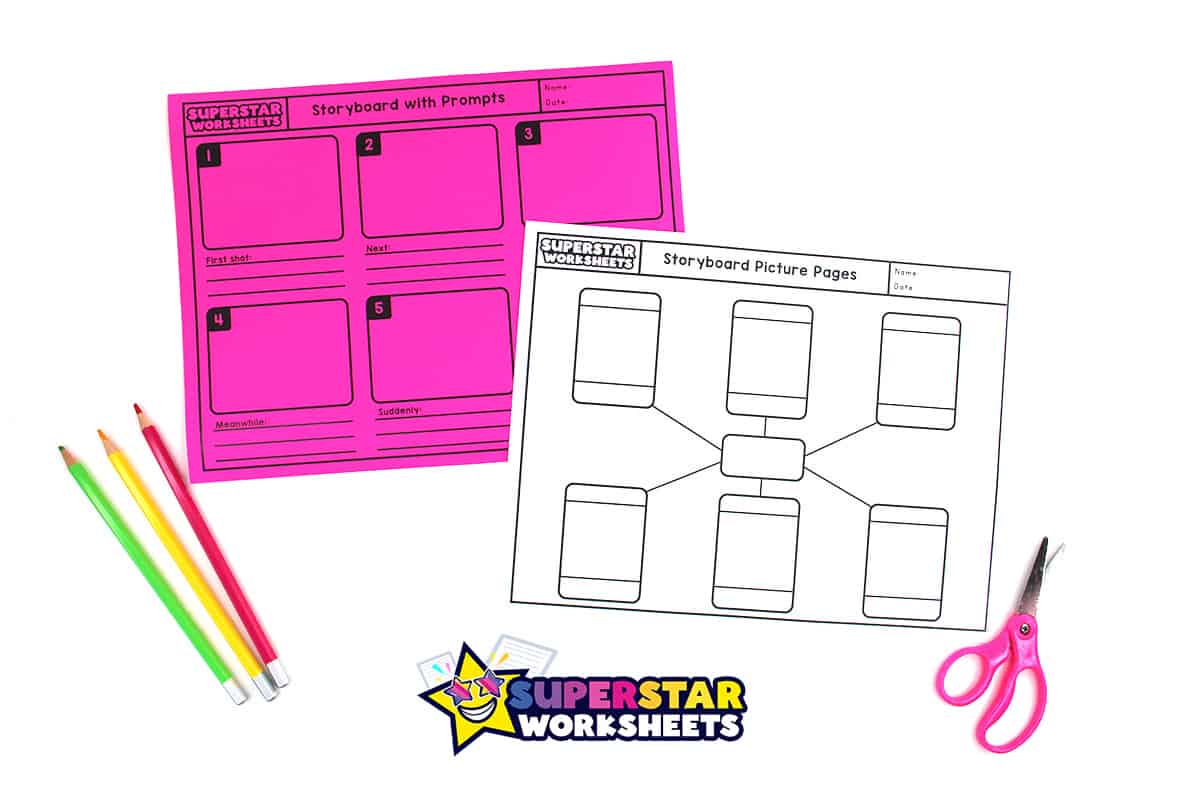
Storyboard Template PDF
Guide your students in structuring their stories and emphasize the importance of clear storytelling elements while using these templates. Allow time for sharing and discussing their storyboards within small groups or as a whole class. This collaborative process will help students refine their storytelling abilities and provide valuable feedback to their peers. By using these storyboard templates, kids can unleash their imagination, develop narrative skills, and create engaging visual stories in an enjoyable classroom environment. Love these? Then you’re going to enjoy our Notebooking Pages, too!
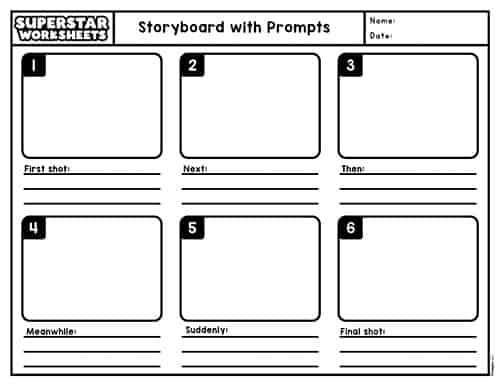
Storyboard with Prompts
This storyboard template provides students with a prompt to begin each of the storyboard frames. There are six frames on this page.
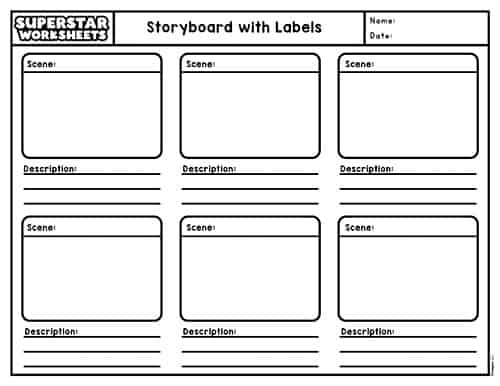
Storyboard with Labels
Storyboard templates with labels create a fun way to organize a story visually. This labeled page features, boxes, labels, and lines.
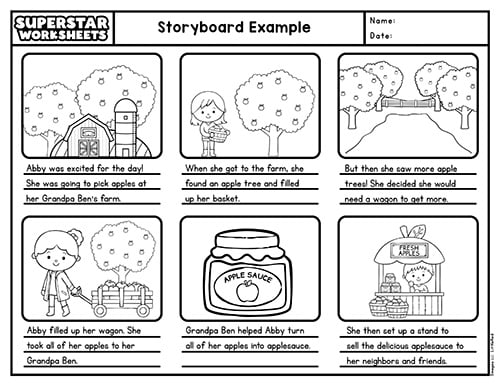
Storyboard Example
This storyboard example template helps teachers show students what a storyboard looks like and what to expect from students.
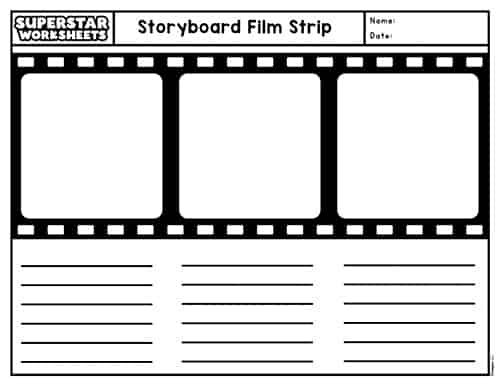
Storyboard Film Strip
Our storyboard film strip features three frames inside of a film strip graphic. Below each frame are six lines for students to write a description of each section.
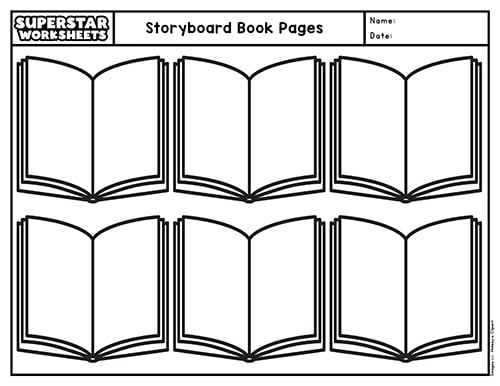
Storyboard Book Pages
Take storyboards to the next level with this storyboard book page template. Write or draw your storyboard inside of adorable book graphics. There are no lines on this page.
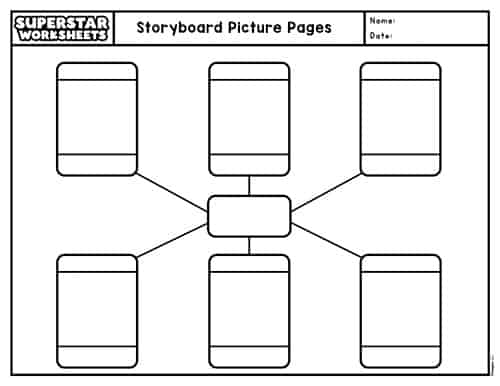
Storyboard Picture Pages
Storyboards are taken up a notch on this picture page template. Students can label and draw using this template. Grab your free PDF printable now!
What is a Storyboard?
A storyboard is a visual representation of a story or concept, typically used in filmmaking, animation, or advertising. It is a series of sequential sketches or illustrations accompanied by brief descriptions or dialogues that outline the key scenes or actions. The purpose of a storyboard is to plan and visualize the flow of a narrative or idea before it is produced or executed. This enables writers to communicate their vision, make necessary revisions, and ensure that the final product meets their creative objectives.
What are the Steps to Storyboarding?
Step 1: Understand Your Story or Idea
- Before you start storyboarding, make sure you have a clear understanding of the story or idea you want to convey.
- Identify the main characters, setting, and key events that happen in your story.
Step 2: Divide Your Story into Scenes
- Divide your story into different scenes or sections. Each scene represents a specific moment or action.
- You can think of scenes like different chapters of a book or episodes of a TV show.
Step 3: Sketch the Main Actions
- Take each scene and sketch the main actions that happen in that particular moment.
- Remember, your sketches don’t have to be fancy or detailed. They can be simple stick figures or rough drawings that represent the actions.
Step 4: Add Descriptions or Dialogue
- Alongside each sketched action, write a brief description or dialogue to explain what is happening in the scene.
- This helps to provide context and give more information to the reader.
Step 5: Arrange Your Scenes in Order
- Once you have sketched and described all your scenes, arrange them in the order they will occur in your story.
- This helps create a logical flow and ensures that your story unfolds in a sequence.
Step 6: Review and Revise
- Take a step back and review your storyboard as a whole. Make sure it makes sense and effectively conveys your story or idea.
- You can make revisions or add additional details if needed.
Step 7: Share and Present
- Finally, share your storyboard with others. You can present it to your classmates, teachers, or even use it as a guide for creating a project or video.
How Do You Create a Storyboard?
Step 1: Choose a Template from Above
Step 2: Print the Template
Step 3: Define Your Story or Concept
Step 4: Divide the Story into Scenes/Parts (Beginning, Middle, End)
Step 5: Sketch the Frames
Step 6: Add Visual Details
Step 7: Add Captions or Dialogue
Step 8: Sequence the Frames
Step 9: Review and Revise
Step 10: Finalize and Share
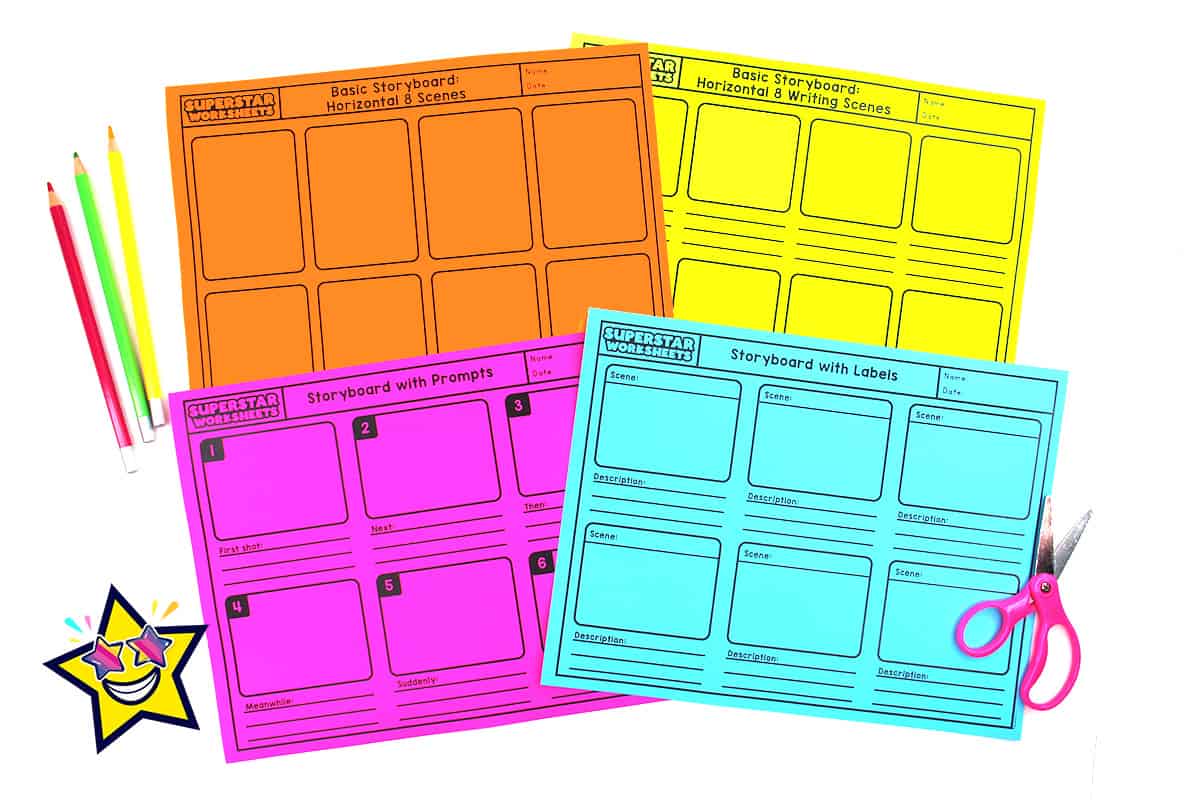

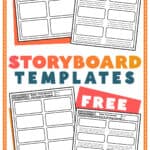
Comments (2)
Thank you for sharing at no cost! This is one of my favorite activities to share with my students in my GT Classes! These are GreaT!!!
Thank you, these help a great deal!